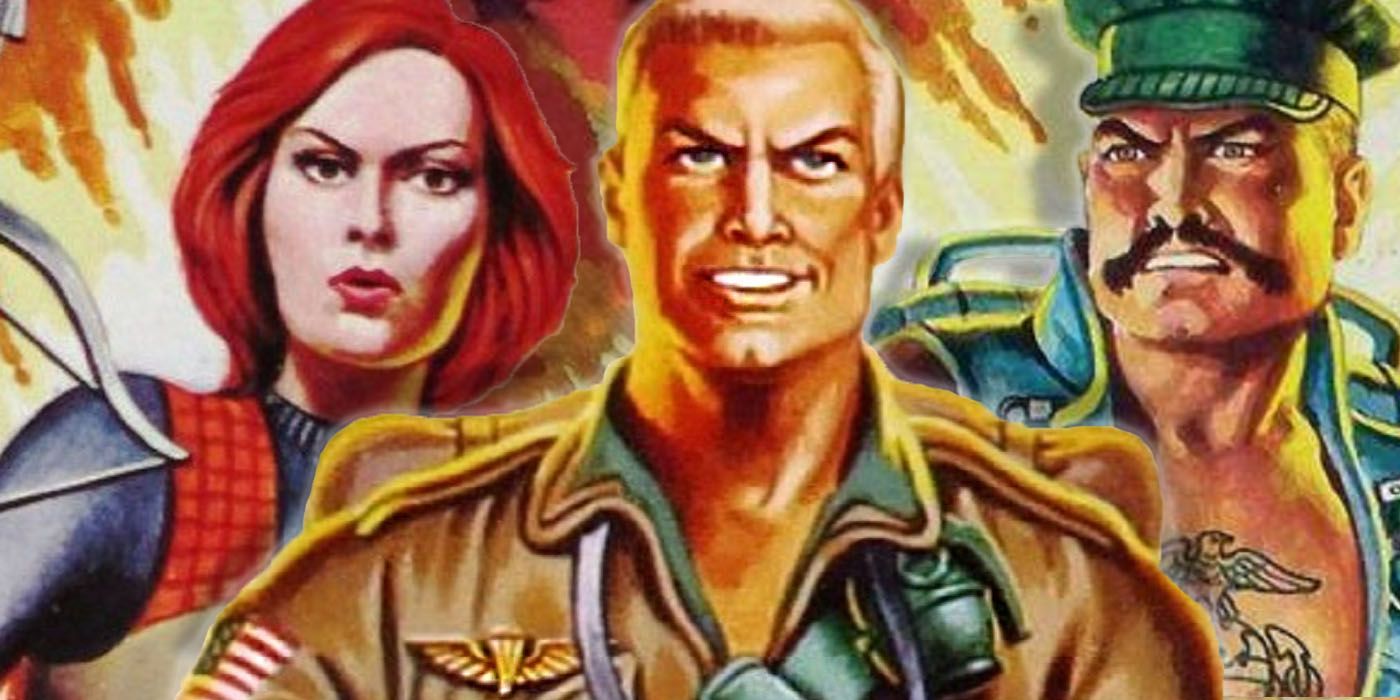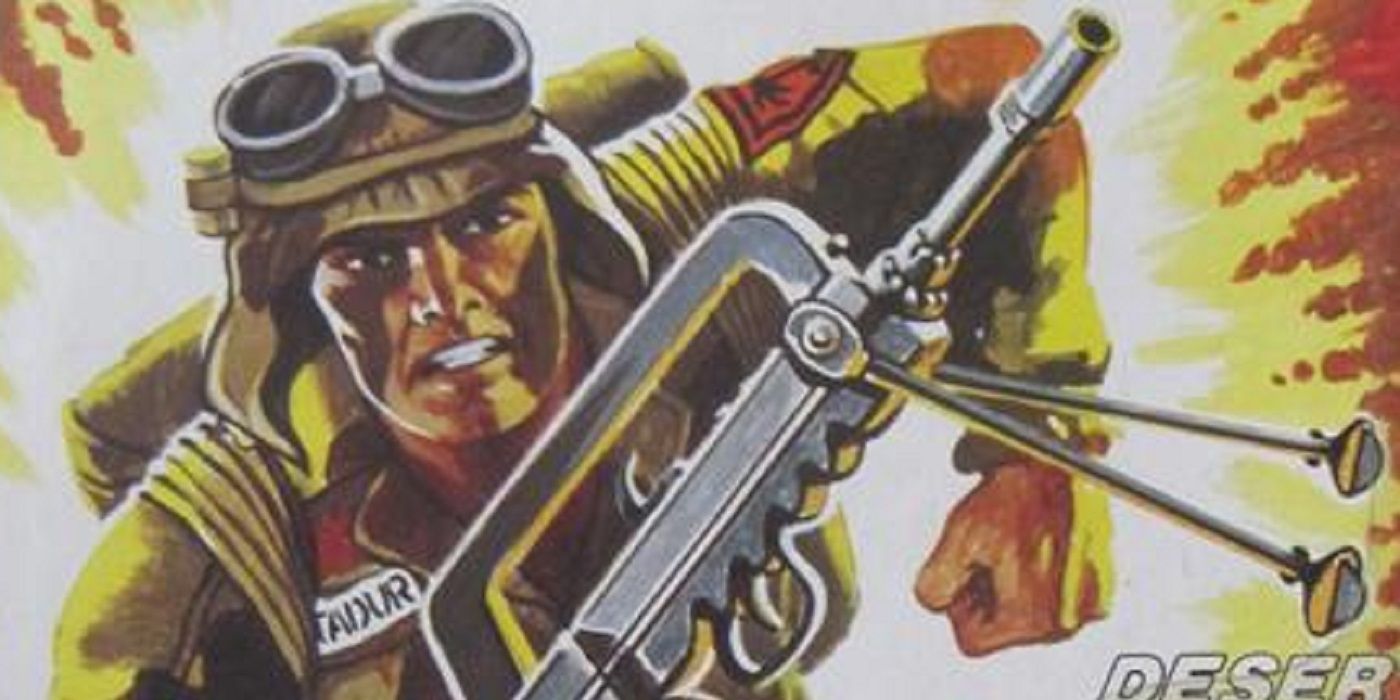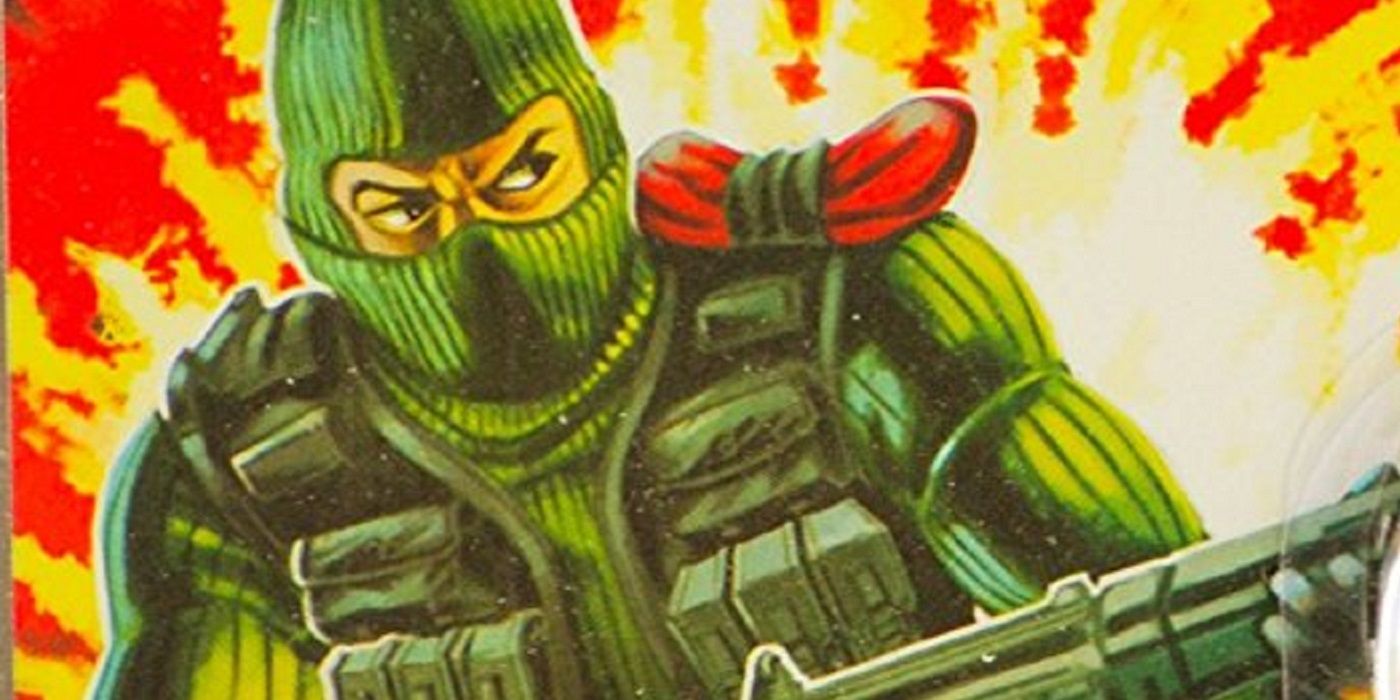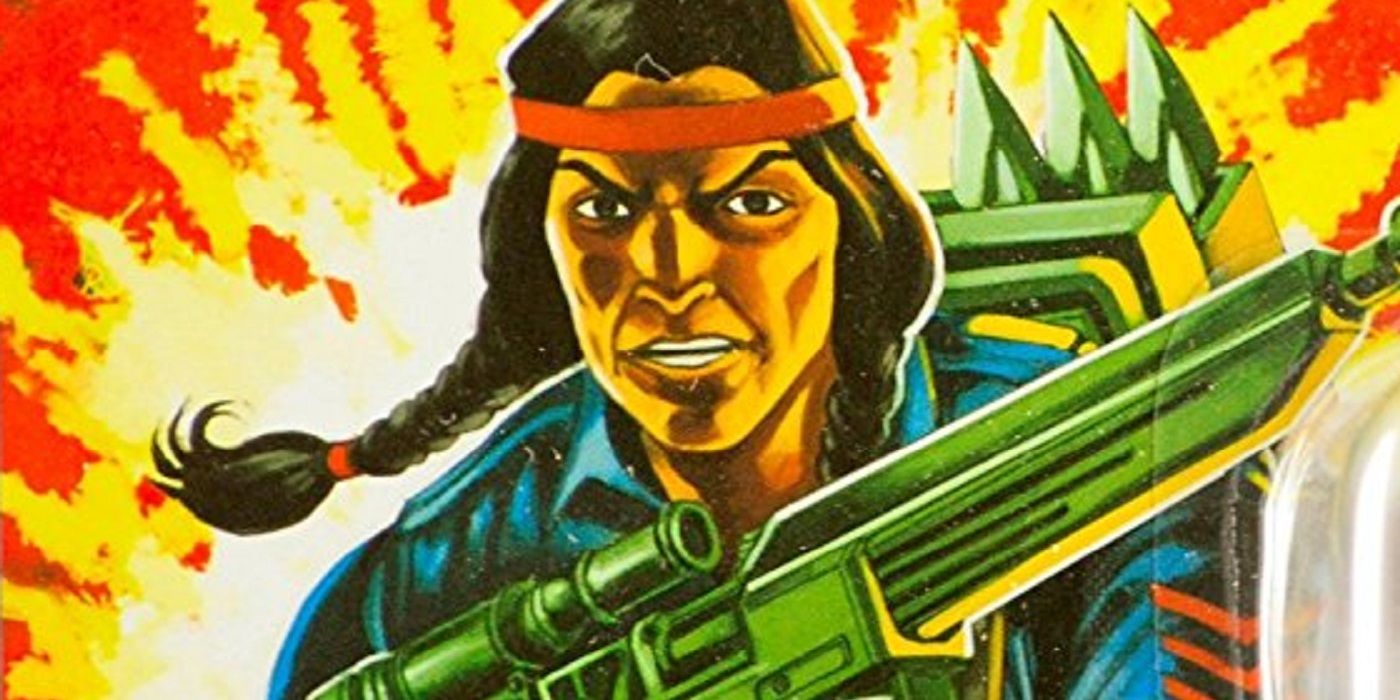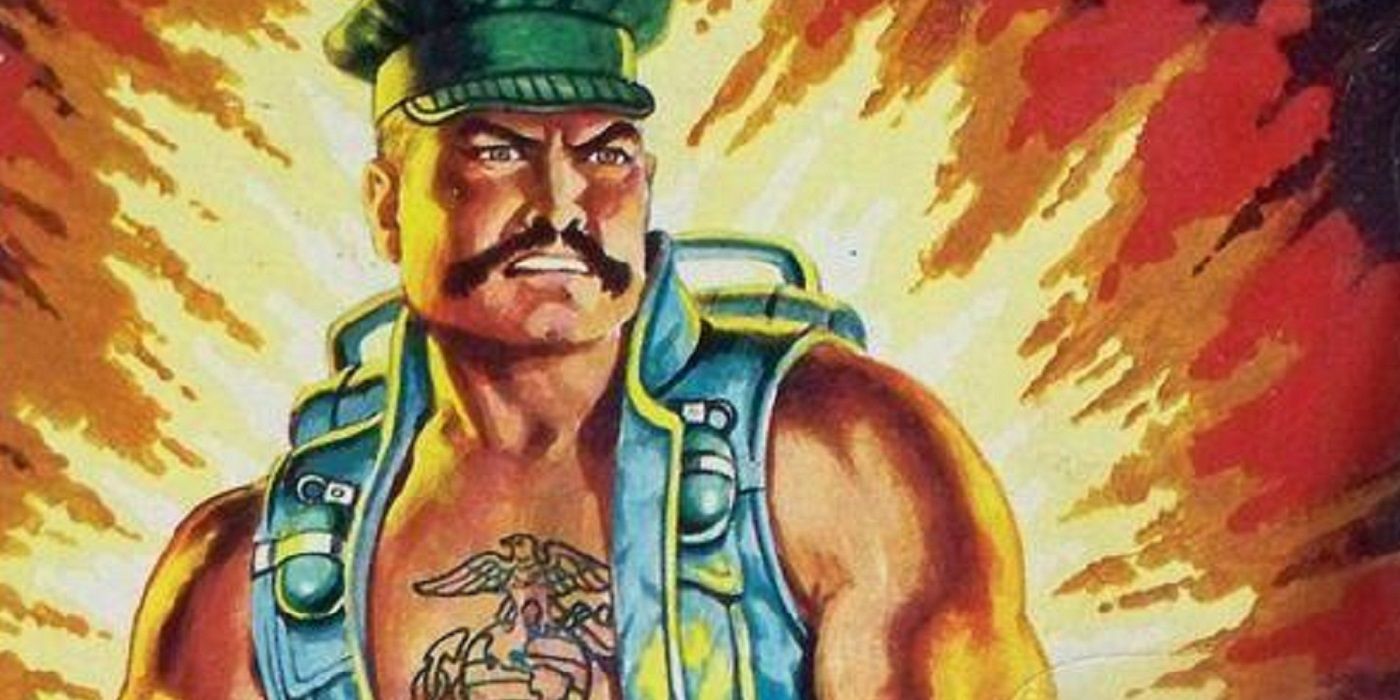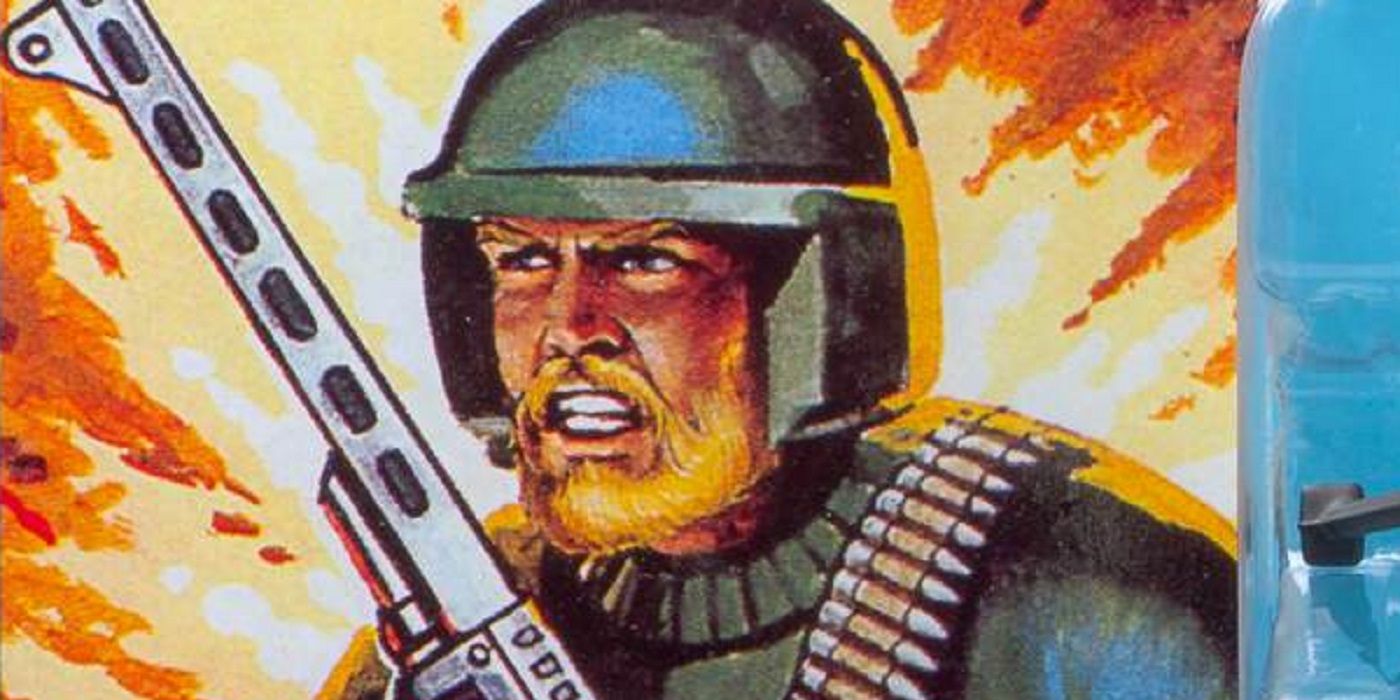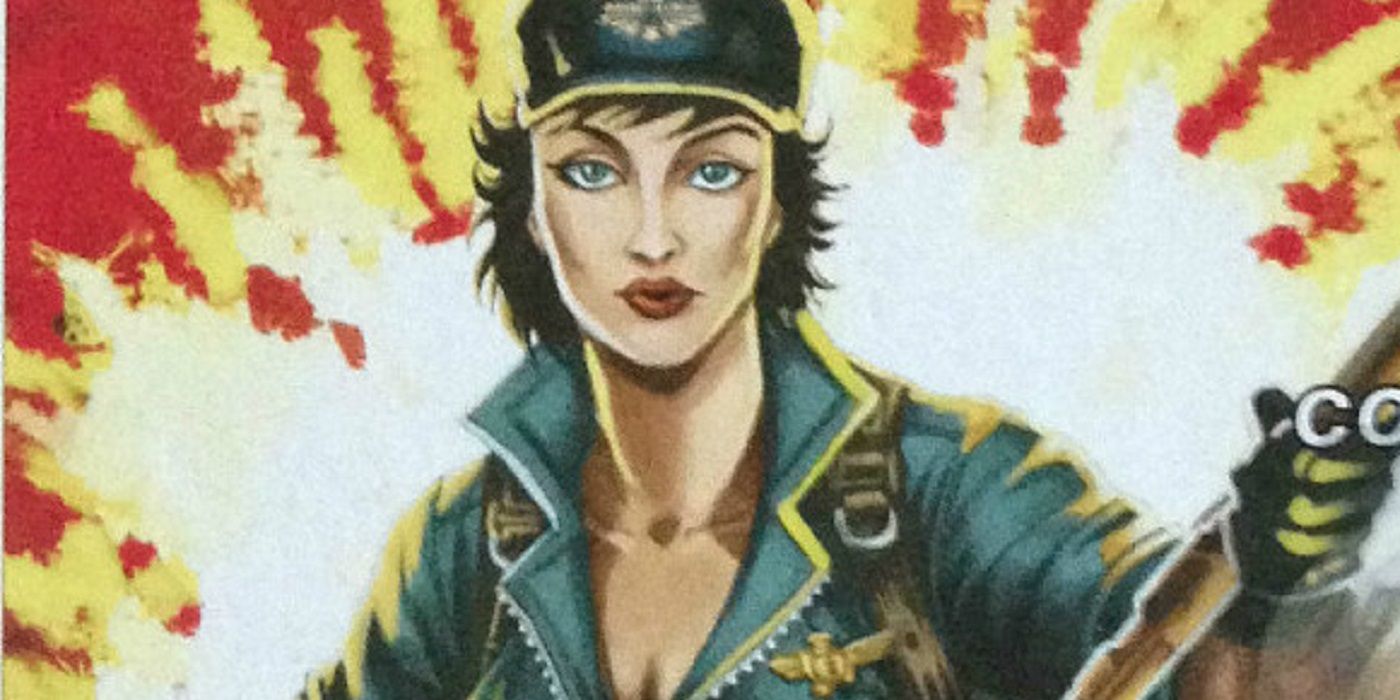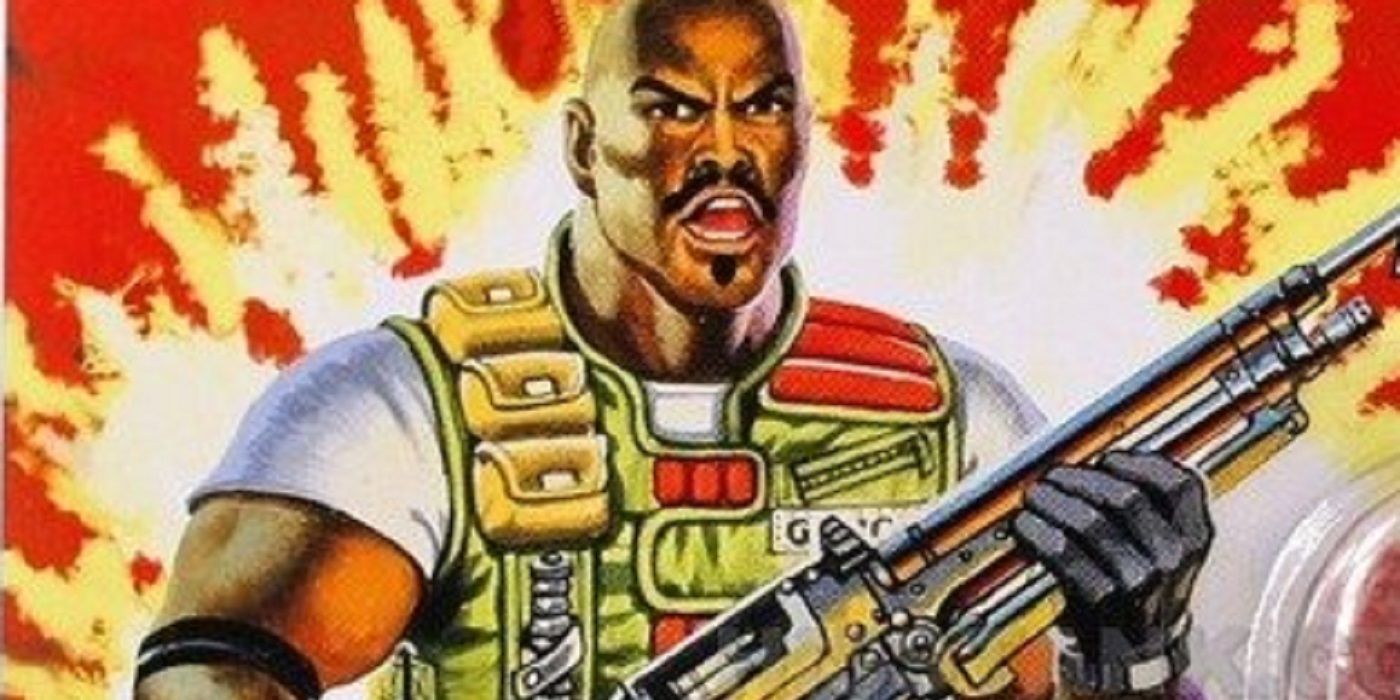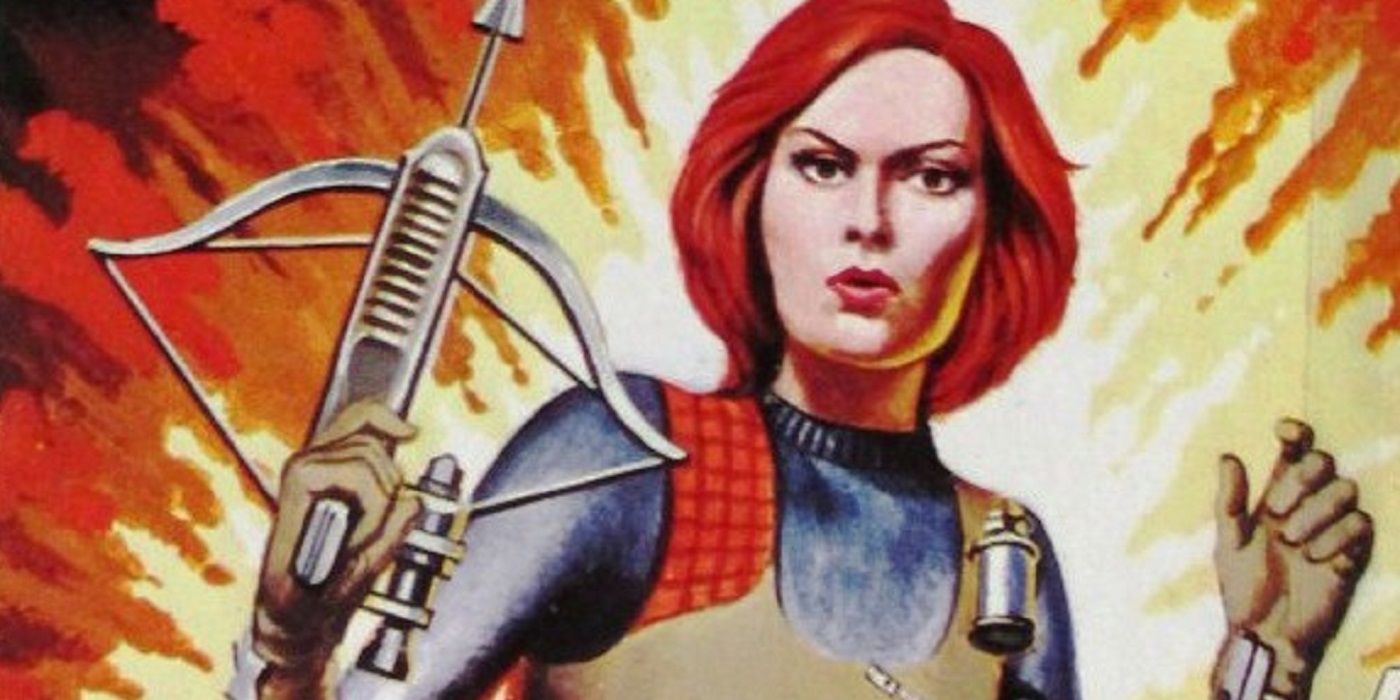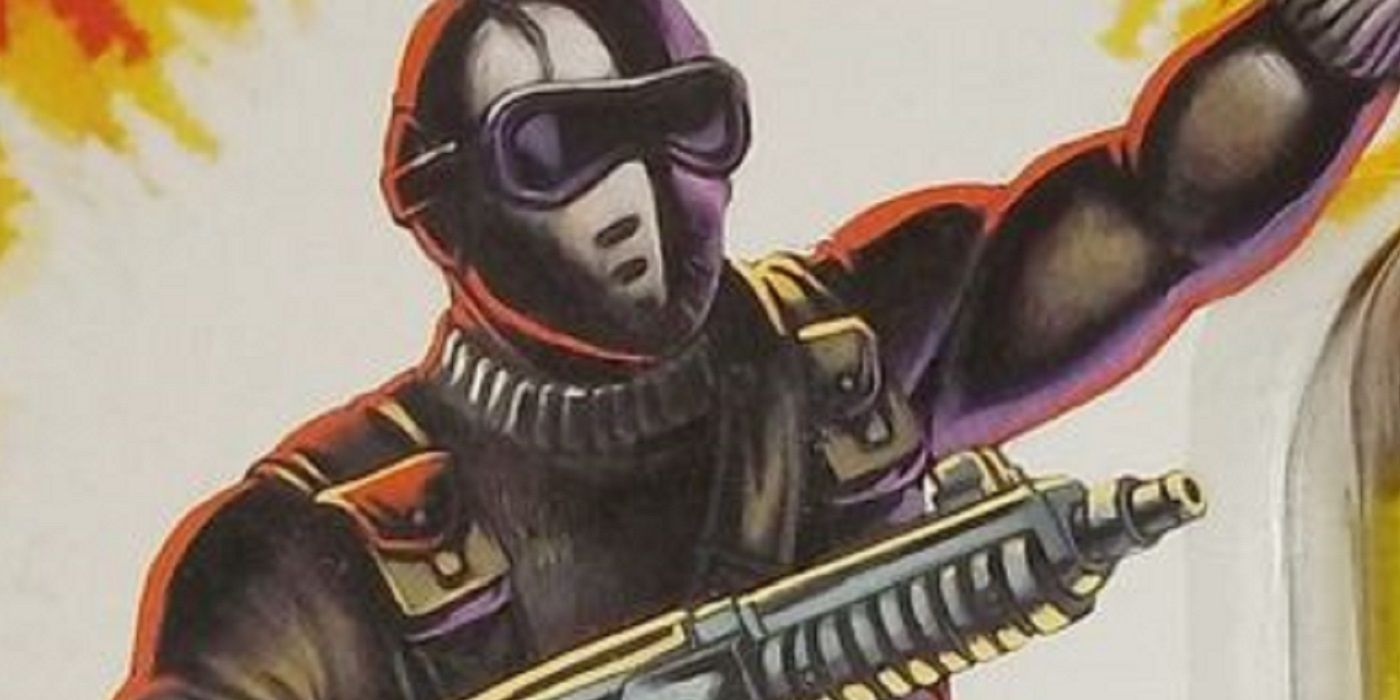When it comes to cross-marketing a toy line, there likely has never been quite as successful a launch as Hasbro's "G.I. Joe: A Real American Hero" toys in 1982. They developed the personalities of their new characters with Marvel, where Larry Hama launched a comic book series to tie in with the toys (a series he wrote for pretty much the entire 12 year run at Marvel) and they did a cartoon series with Sunbow that was one of the most beloved cartoon series of the 1980s.
RELATED: The 15 Weirdest G.I. Joes
The downside is that the cartoon and comic book series were telling almost completely different stories. Larry Hama had no say in what happened in the cartoon series, and as a result, they each spotlighted different characters. So, when you rank the greatest members of G.I. Joe of all-time, you have to balance the fact that a character who got a lot of attention on the cartoon series might have been a background character in the comic and vice versa. We'll give the comics (which ran for much longer) slightly more weight in the rankings. With that in mind, here are our picks for the greatest members of G.I. Joe of all-time (PS: We're excluding Storm Shadow. He's awesome as a G.I. Joe, but he's been Cobra for much longer.)
15 DUSTY
As noted, certain characters (particularly those that debuted in the 1985 edition of the toy line, which was when the "G.I. Joe" cartoon debuted) were featured a lot more heavily in the TV series than the comic, so we're discounting characters like Bazooka and Alpine, who never made much of an impression in the comic book series. Quick Kick was a close call, but ultimately we decided to feature Dusty, the Joe's desert trooper, who was featured frequently in the TV series. This includes a famous Season 1 two-parter where he seemingly betrayed the Joes and joined Cobra.
In the comic, though, he was also featured prominently, especially in the early 1990s parallel to "Desert Storm," where the Joes got involved in a war in the Middle Eastern country of Benzheen. Dusty's friend and teammate, Sneak Peek, was seemingly killed and Dusty carried him for miles back to the Joe's base, by which time Sneak Peek had passed away! Don't worry, though, it turned out his death had been faked. Dusty had a hard time getting over that particular betrayal.
14 JINX
Jinx made her debut in the cartoon series as one of the prominent new characters introduced in "G.I. Joe: The Movie," where she also served as the love interest to the young hero of the film, Lt. Falcon. She was a big part of the finale of the movie and even got her own special one-on-one fight with one of the main villains of the movie.
She was a much bigger deal, however, in the comic books, as Larry Hama famously featured the ninja characters heavily in "G.I. Joe." Being one of the only female ninja characters, this led to Jinx taking on a prominent role in the comic. First, this was thanks to her connection with Billy, the son of Cobra Commander (who she trained as a ninja), but later on, when the series returned at IDW, Jinx had a major role in the long-running Blue Ninja storyline, where the Joes have faced off against a clan of cybernetic ninjas.
13 BEACH HEAD
One of the biggest differences, personality-wise, between the comic book and the cartoon series, occurred with Beach Head, the Joes' top Ranger. In the comic books, he was noted for his calm personality, which allowed him to deal with dangerous situations without freaking out. This made him a valuable asset on a number of major Joe missions, including the Battle of Springfield, one of the many Battles of Sierra Gordo and the Cobra Civil War.
In the cartoon series, on the other hand, he was a brash and vocal character, seemingly obsessed with rules and with his place in the hierarchy of the G.I. Joe squad. He and Flint were roughly the same leadership level, and thus they had a strong rivalry with each other, highlighted by the fact that Beach Head didn't approve of Flint and Lady Jaye's romantic relationship. In "G.I. Joe: The Movie," Beach Head was the trainer for the new recruits.
12 SPIRIT
As we mentioned before, the Joes that debuted in the 1985 toy line got to be featured prominently in the TV series that debuted that year. However, that TV series followed two previous cartoon miniseries in 1983 and 1984. Those miniseries, naturally enough, prominently featured characters that debuted in the 1983 and 1984 toy lines. Spirit, the main tracker for the Joes, was a major character in that 1984 series, and amazingly enough, for a number of fans who only watched the cartoons, it was Spirit who was mostly matched up against fellow 1984 debut character, Storm Shadow, not Snake-Eyes. Spirit and Storm Shadow even had that "if it weren't for us being 'sworn enemies,' we would be friends" thing going on that Snake-Eyes and Storm Shadow did so well in the comic.
Speaking of the comics, Spirit was featured in a few major storylines, but for the most part has been the main defender of the G.I. Joe secret base, The Pit. He has served in that role with distinction for pretty much the entire run of the series and to this day, that is his main job, keeping people from discovering the secret base.
11 GUNG-HO
The first Marine in the Joes, Gung-Ho was given a major role in the comic books after he debuted in 1983. Pretty much every major Joe mission in Gung-Ho's first year in the series involved him in one way or another, and he was involved prominently in both the Joes' first mission in Sierra Gordo as well as guarding Cobra Commander during the time that the Joes actually managed to capture the evil leader (it did not work out well for them in the end).
In the cartoon series, Gung-Ho was a big part of the first miniseries (which spotlighted the 1983 additions to the toy line) and was then used frequently in the first season of the series, especially due to his Cajun accent. During a notable storyline where Cobra tried to brainwash the families of the Joe members (the families of the Joes were way too exposed in the cartoon series), Gung-Ho's family hilariously managed to defeat Cobra on their own!
10 ROCK 'N ROLL
One of the original members of the G.I. Joe line of toys, Rock 'n Roll stood out right from the get-go due to his distinctive blond beard and cool nickname. The other Joes tended to blend together, looks-wise, and their names weren't nearly as cool -- Clutch, Breaker, Steeler, Grunt -- come on, there's no contest! Likely due to his distinctiveness, Rock 'n Roll was given major roles in a lot of the early Joe adventures and was even later revealed to have been part of the failed mission that led to Snake-Eyes losing the ability to speak. In his biggest comic book storyline, he and his old friend, Clutch, were brainwashed by the Baroness. She later triggered the pair, but they managed to fight off the control. That storyline was re-visited a few years back in the relaunched IDW series.
His love of, well, rock and roll, led to Rock 'n Roll making some memorable appearances in the "G.I. Joe" animated series, including the infamous (but awesome) episode, "Cold Slither," where the Joes have to form a rock group (the Average Joe band) after disbanding Cold Slither, a rock group created by Cobra to brainwash teens.
9 HAWK
Hawk was really a victim of timing. When the "G.I. Joe" comic book debuted, Larry Hama featured Hawk prominently in the comic as not only the field leader of the team, but as the man who actually put the team together, as he personally recruited most of the members, including Snake-Eyes. However, after the death of General Flagg, who was technically in charge of the Joes, Hawk was moved up the chain of command and was no longer a member of the team on the field. Because of this, when the cartoon debuted in 1983, Hawk was then not included in the initial miniseries or the first season of the follow-up series.
He finally showed up in the second season, coinciding with a new release of his toy, now as a General. His first toy came with a missile and he was "only" the missile commander. At the time, he was billed as the never-before-seen-but-trust-us-he-was-here-all-along leader of the Joes, but he mostly delegated to his subordinates. In the early 1990s, Hawk began to take on a bigger role in the comic book, actually leading a number of missions personally.
8 STALKER
Typically speaking, when there was a major difference in the importance of a character, it tended to be a matter of the cartoon series making a bigger deal out of a particular character than the comic book series, but occasionally it was the other way around. The most prominent example of the second phenomenon was Stalker, who was one of the original members of the "G.I. Joe" toy line. As a result, Larry Hama considered Stalker the true successor to Hawk as the field leader of the team once Hawk was bumped up the chain of command and could no longer actively lead the team.
In addition, Stalker was the closest on the team (other than Scarlett, of course) to Snake-Eyes, as they had served in Vietnam together. In one notable storyline, he led a rescue mission into Sierra Gordo to save Snake-Eyes, but in the process, he is injured and Snake-Eyes takes over and makes the other Joes leave with Stalker while Snake-Eyes fights the bad guys off. Later, in perhaps Stalker's most notable storyline, he is captured (along with Quick Kick and Snow Job) on a mission and they are tortured for weeks before being rescued by his old friend, Snake-Eyes.
7 SHIPWRECK
Shipwreck was an example of a character who gained prominence through the cartoon series. Oddly enough, he was a major player in the 1984 miniseries, despite his toy not debuting until 1985. Neil Ross' brilliant Jack Nicholson impression made Shipwreck stand out from the other characters and in the first season of the series, Shipwreck was one of the most featured characters on the show, receiving a number of spotlight episodes, including one where he fell in love with a Cobra operative who had been experimented on to turn her into an amphibious agent.
Shipwreck was also the star of possibly the most acclaimed episode of the "G.I. Joe" series period, the Steve Gerber-penned finale of the first season, "There’s No Place Like Springfield." In it, Shipwreck awakens in the suburbs, years after the Joes have allegedly defeated Cobra. But it turns out to all be a cruel trick by Cobra. In the comic book series, Shipwreck appeared relatively frequently, but almost always just as a background/support character. Whenever there was a story set on the ocean, Shipwreck would naturally be there, but that was about it.
6 DUKE
The biggest difference between the cartoon series and the comic book, and a difference so large that there were undoubtedly legions of young fans who didn't know what the heck was going on with the use of this character in the comics, was the use of Duke. As noted earlier, when Hawk was promoted, Larry Hama mostly used Stalker as the field leader of the Joes. However, in the cartoon series, it was Duke who was the field leader of the team. It likely helped that the original 1983 miniseries coincided with the introduction of Duke to the toy line as the First Sergeant of the Joes.
Duke was clearly the starring character of the "G.I. Joe" TV series, since he was depicted as the leader of the Joes (he's prominently featured on most of the marketing materials for "G.I. Joe"). He was also seen as the love interest for Scarlett on the TV series. In the comic books, though, Duke was rarely given any notable plots at all. That recently changed, however, in the IDW series, where Larry Hama has told a long-running story about Duke's wife, who turned up alive after he thought that she had died years earlier.
5 FLINT
As we have shown, the comic book versions of characters are often much different than the cartoon versions of characters, but one of the rare instances where the character was handled pretty much the same in both series was the character of Flint. An egotistical, but goodhearted member of the team, his biggest storytelling attribute is that he is by far the most practical of all the Joes. In other words, he gets to be the guy that the writers have to question the outlandish parts of the narrative, thus hanging a lampshade on the crazy parts of the story.
His romantic relationship with Lady Jaye is the only romantic plot that appeared in both the cartoon series and the comic book series. Their romance was heavily featured in the first season of "G.I. Joe," although Flint ended up appearing less in the second season of the series, as the addition of Hawk to the show bumped both Duke and Flint down a peg in the chain of command.
4 LADY JAYE
One of the most prominent characters in the "G.I. Joe" cartoon series, Lady Jaye ended up serving as almost a bit of a den mother to the other Joes, based on her calm manner and wisdom. This was a bit different from her characterization in the comic book series, where she had more of a temper. However, you could still see her temper come out a bit in the cartoon series on certain occasions.
Her romance with Flint tended to be her major plotline on the cartoon series, although she also had an interesting story where it turned out that she and Destro might be related. In the comic books, she and Flint have been romantically involved for years. That ended up actually causing a major problem, eventually, when she was injured on a mission where they were sent to capture a former agent of Destro's named Darklon. Darklon was injured at the same time as Lady Jaye, and Flint naturally was more concerned with saving her, even though the mission revolved around saving Darklon. Lady Jaye insisted that Darklon be treated first, and Flint eventually agreed. When the mission was over, Hawk told Flint that he and Lady Jaye could no longer go on missions together.
3 ROADBLOCK
Roadblock was the most notable African-American character on the cartoon series (while in the comic book series, he and Stalker have had roughly equal footing), as he dazzled the bad guys with a series of rhymes right from his first appearance in the 1984 miniseries. The comic book version of Roadblock did not rhyme, but otherwise, they are both very similar, as they are goodnatured men beloved by their teammates and likely the most trustworthy of all the Joes.
In the comic book series, when the Joes needed someone whose willpower would be a match for Serpentor, they went with Roadblock, whose force of will is as impressive as his size and his ability to use a machine gun. Whether it is the cartoon or the comic book series, Roadblock never ceased to play a major role throughout the history of "G.I. Joe." In case you were wondering, Roadblock's passion for cooking existed in both series.
2 SCARLETT
The only female member of the original G.I. Joe toy line -- which meant that she was the only figure who needed an entirely new mold -- Scarlett has long been one of the most notable characters in the comic book series, as Larry Hama has always prided himself in writing Scarlett as "just one of the team" and never as a stereotypical "damsel in distress." That mostly carried over to the cartoon series, as well, as Scarlett was a major character in the first season of the series.
The big difference between the comic and the cartoon is that in the cartoon, Scarlett is romantically involved with Duke, while in the comics, she is involved with Snake-Eyes. Her relationship with Snake-Eyes has really been one of the building blocks of the entire series. She even eventually joined Ninja Force with Snake-Eyes. Sadly, in the current series, she has had to deal with the death of her longtime love.
1 SNAKE EYES
It is interesting to note that the "G.I. Joe" cartoon series relatively downplayed the importance of Snake-Eyes (outside of the 1983 miniseries, where he had a major role), but even with that, he still managed to capture the imaginations of most fans of "G.I. Joe," as seen by him constantly receiving new editions of his figure (every kid wanted to have a Snake-Eyes toy). Imagine if the cartoon had actually given him a major role! Snake-Eyes was so famous that he even partially inspired the design of Deadpool!
Snake-Eyes' role in the comic book, though, was a lot like Fonzie in "Happy Days," he was so clearly the star of the comic book that they even briefly just flat out re-named the comic book "G.I. Joe Starring Snake-Eyes" from #135-145, much in the same way that ABC wanted to re-title "Happy Days" as "Fonzie's Happy Days," but Garry Marshall threatened to quit if that happened. Tragically, in the current Larry Hama series at IDW, the original Snake-Eyes perished in battle against Serpentor, but he has been succeeded by a young soldier as the new Snake-Eyes.
We know that you folks have different thoughts on this list, so let us know in the comments section!

